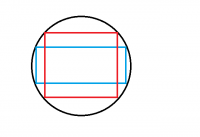Huh. Sony E-mount is narrower than Canon EF-M mount (46.1mm vs. 46.5mm). If the Sony E-mount cameras can take full-frame FE lenses why can't EF-M bodies? Also, Sony users are complaining about vignetting and problems with wide-angle lenses with E-mount. Sony could have avoided that problem by using Konica-Minolta's wider A-mount (49.7mm diameter), which was designed for 35mm full-frame, unlike the E-mount which was designed for NEX-style compact ILCs. So I can also argue that Sony painted themselves into a corner by using a lens mount designed for small cameras and shoehorning full-frame lenses for it. Look at the front of any Sony E-mount MILC without a lens and you can readily see that the full-frame sensor corners don't even clear the lens mount.
Exactly this. I disagree that Canon should have used the "M" mount for this FF mirrorless, because they would have painted themselves in the same corner as Sony. Moving forward, both Canon and Nikon will be able to take advantage of the larger diameter RF and Z mounts respectively for their mirrorless systems, while Sony will remain constrained with the E-mount, due to its design being meant for crop sensor cameras; not full frame.
I do agree that there will be consumer confusion with Canon having four different lens systems, and they need to work quickly to correct this. As an example, Nikon terminated the "Nikon 1" just before the Z System went on sale. Canon's M system has been arguably more successful, but I still wonder whether the long-term plan is to eventually phase out the M system in favor of the RF system?
Your photo doesn't help because it is shot at an angle, and, in any case, my point was the EF-M mount can take an FF sensor if the smaller E-Mount can. Also, the vignetting & wide-angle corner problems caused by the E-Mount is well-known.
View attachment 180124
Actually, the diagonal of a FF 36x24mm sensor is 43.5mm, so a FF sensor will *just* fit inside a 46.1mm throat diameter if you are properly aligned with the camera.
Last edited:
Upvote
0


